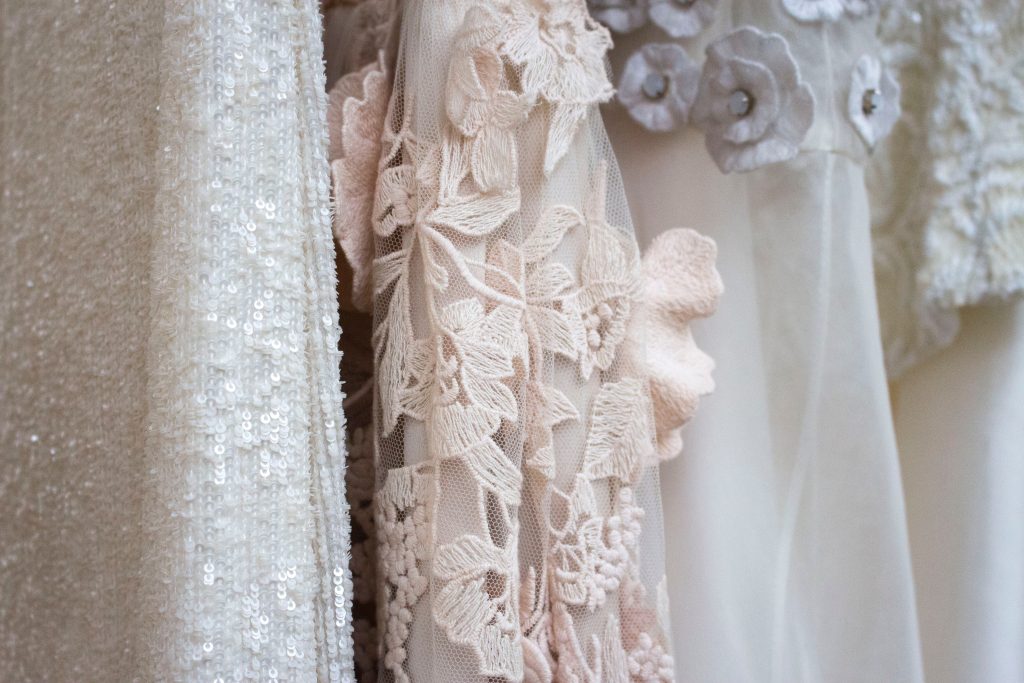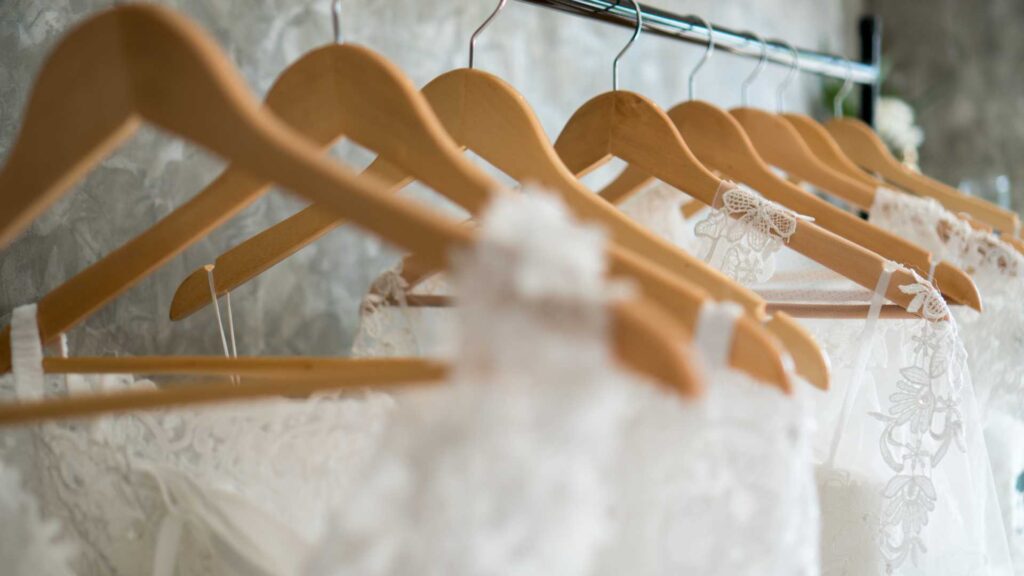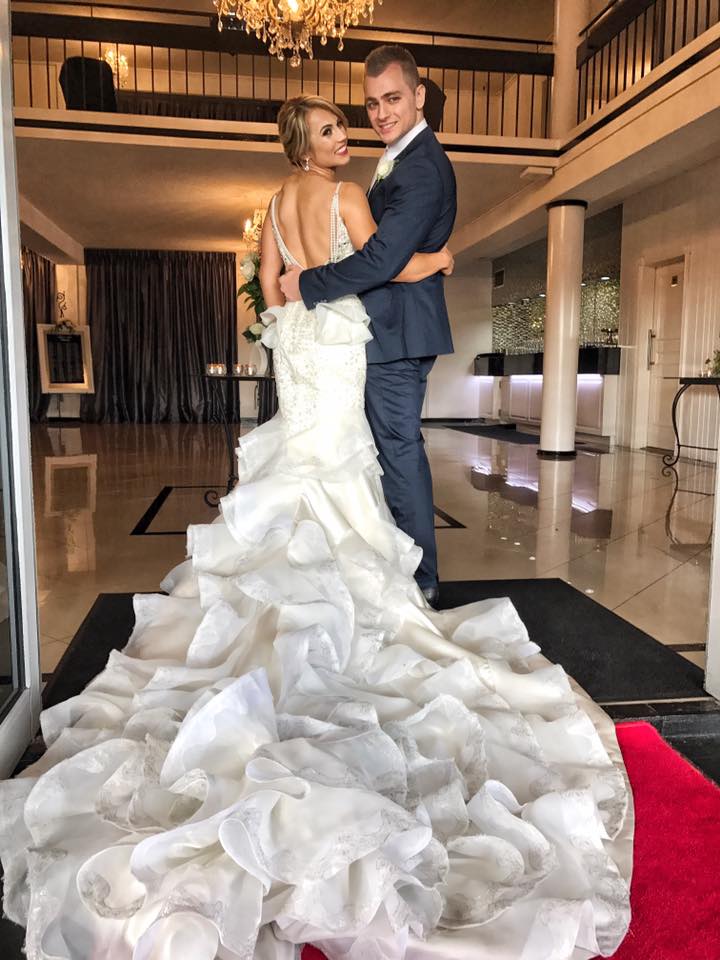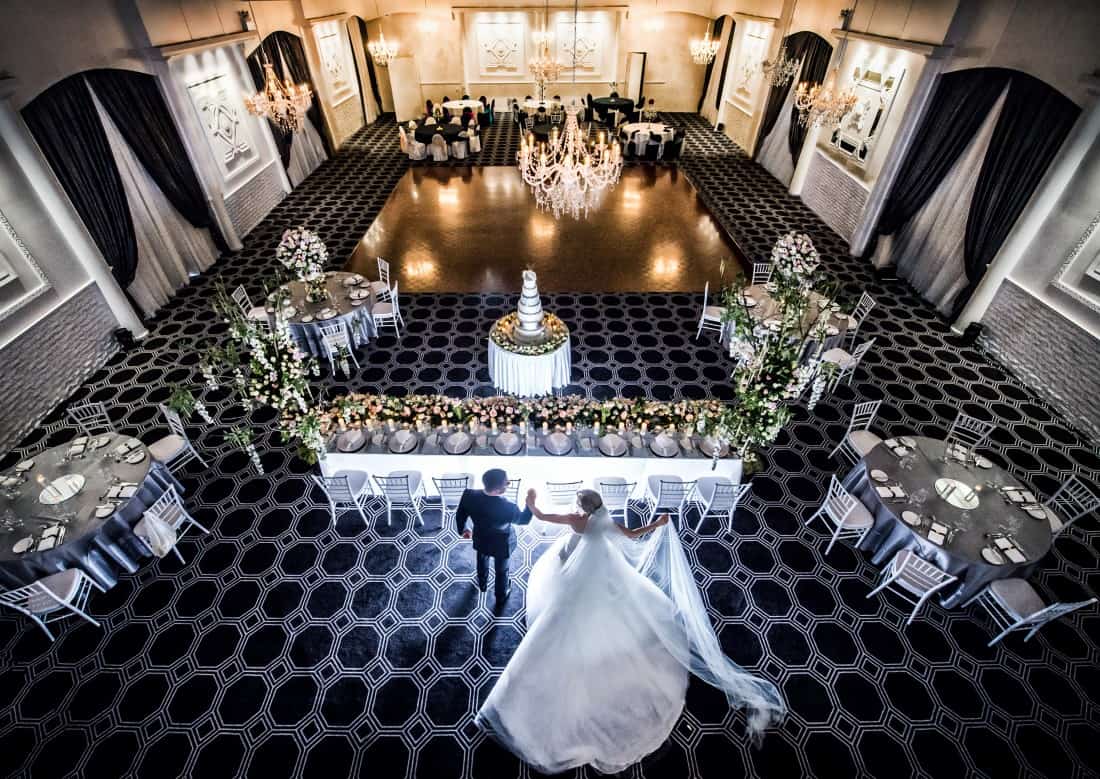Every bride treasures her wedding dress, but with time, even the most beautiful gowns can show signs of age, often turning yellow. This common issue can be disheartening, but there are effective ways to restore a yellowed dress to its former glory. This guide will walk you through the causes of fabric yellowing, how to prevent it, and the steps for cleaning or restoring your wedding dress.
Let’s Get Straight to the Point
The breakdown of fabric fibres, improper storage, and undetected stains like sweat or spills cause the yellowing of wedding dresses. Check the care label to restore a yellowed dress, and use mild detergents for spot cleaning or hand washing. Professional dry-cleaning is recommended for delicate fabrics like silk or satin.
Challenges in restoration include dealing with vintage buttons, lace, and satin fabrics, which may not fully return to their original colour or texture. Store your dress in acid-free tissue paper in a cool, dry place to prevent yellowing and avoid plastic bags. Professional cleaning can restore dresses, but slight colour variations or fabric changes may remain.
The Most Effective Way To Restore A Yellowed Wedding Dress
Restoring a yellowed wedding dress is possible, but it requires careful attention. Here’s a step-by-step guide:
1. Check The Care Label
The first step is to look for the care label on your wedding dress. This will give you information about the fabric and how to clean it. You can identify the fabric by touch and appearance without a care label.
- Polyester, acetate, chiffon, voile, and cotton dresses can usually be treated at home if the staining is not severe.
- Silk, satin, taffeta, and rayon are delicate fabrics that should be handled by a professional dry cleaner.
2. Spot Treatment For Mild Stains
If your dress has mild yellowing or stains, use a mild liquid detergent and lukewarm water to treat the affected areas. Here’s how:
- Use a clean cloth or a soft toothbrush to apply the soap to the stained areas gently.
- A mix of baking soda and vinegar can work wonders for stubborn stains.
- After applying the spot treatment, rinse the dress thoroughly with water to remove any soap residue.
3. Hand Washing
If your dress’s care label permits hand washing, follow these steps:
- Fill a tub with lukewarm water and a gentle detergent.
- Submerge the dress on the wrong side and gently move it around in the water. Avoid scrubbing the fabric, as this can cause damage.
- Drain the tub and refill with clean water, gently swirling the dress to remove soap residue. Repeat until the water is clear.
- Air-dry the dress; avoid using a dryer, as heat can damage delicate fabrics.
4. Dry Cleaning
For severe yellowing or delicate fabrics like silk or satin, it’s best to seek professional help. A professional dry cleaner can carefully clean and restore your wedding dress without risking damage to embellishments like lace, buttons, or beading.

Causes Of Fabric Yellowing
Yellowing fabric is a well-known textile industry problem and is especially problematic for wedding dresses. The main cause is the chemical breakdown of fabric fibres over time. Here’s how it happens:
- Chemical Reactions: Over time, the chemicals in colourless fabrics start degrading, resulting in a yellow or light-brown hue.
- Storage in Plastic: Many brides store their dresses in plastic bags, which is a big mistake. Plastics release vapours that can speed up the yellowing process.
- Undetected Stains: Sweat, deodorant, and spills (like wine) from the wedding day can leave behind invisible stains. These stains contain sugars that eventually caramelise, leaving dark, permanent marks on your dress.
When Does A Wedding Dress Start To Yellow?
Without proper care, your dress can start to yellow as soon as six months after the wedding. Delicate fabrics like satin, chiffon, and organza are particularly susceptible to this. Here are the key factors that cause yellowing:
- Time: Fabrics can begin to yellow within a few months, and the yellowing deepens with age.
- Environmental Factors: Storing a dress in damp or humid conditions, such as a basement or attic, can speed up the process. Even in seemingly good conditions, dresses can fade and turn yellow over time.
Common Challenges In Restoring Vintage Wedding Dresses
Restoring an older wedding gown often comes with unique challenges. Here are some of the most common issues you might face:
Vintage Buttons
Older dresses may feature wooden, metal, or paper pulp buttons, which can be damaged during cleaning. Be prepared to replace some of these delicate buttons.
Vintage Lace
Lace is a delicate fabric and can become brittle over time. Lace can tear easily during restoration, but a skilled sewer can often repair it.
Satin Fabric
Satin dresses can be tricky to restore. Although satin can be cleaned, the fabric’s sheen may diminish, and the final colour may not be as vibrant as it once was. Sometimes, slight colour variation may occur, leaving the dress darker or lighter than the original.
Vintage Veils
Veils from the 1950s or earlier are especially delicate and difficult to clean without damaging the fabric. For this reason, silk veils or veils with intricate details should always be cleaned by a professional. Tulle veils or those made from netting can usually be dry cleaned at home, but handle them carefully.
Proper Storage Of A Wedding Dress
Proper storage is the key to preventing yellowing in the first place. Here’s how to store your dress correctly:
- Use Acid-Free Tissue Paper: Wrap the dress in acid-free tissue paper to prevent the fabric from touching anything that could cause yellowing.
- Avoid Plastic Bags: Never store your wedding dress in a plastic bag. Instead, use a cotton garment bag or a preservation box.
- Store in a Cool, Dry Place: Keep the dress away from humidity, direct sunlight, and temperature fluctuations. The best places to store a wedding dress are cool, dark, and dry places, such as a bedroom closet.
What To Expect After Restoration?
While restoration can bring back the beauty of your wedding dress, there are some things to be aware of:
- Colour Variation: Depending on the age and fabric of the dress, the final colour may not be a perfect match to the original shade of white or ivory. Slight yellowing or fading may remain, even after professional cleaning.
- Fabric Texture: Some fabrics may lose their original texture or sheen after being restored. For example, satin might lose its lustre, and rayon or cotton fabrics may shrink slightly during cleaning.
- Restored Veils: If your veil is delicate or vintage, a dry cleaner may suggest replacing the netting or lace rather than attempting a full restoration.
Finding A Reliable Professional
If you take your dress to a professional, choosing someone with experience cleaning wedding gowns is important. Ask the following questions:
- Will they clean the dress on-site? Some dry cleaners send dresses to an off-site location for cleaning.
- Do they use virgin solvent? This refers to a cleaning solvent that has never been used before and is essential for preserving delicate fabrics.
A yellowed wedding dress doesn’t have to stay that way forever. With proper care and restoration, your gown can look beautiful once again. If your dress has just turned yellow, consider spot treating and hand washing it at home. For older or more delicate gowns, seek the expertise of a professional dry cleaner. Either way, restoring and caring for your dress ensures it remains a cherished memory for years to come.



